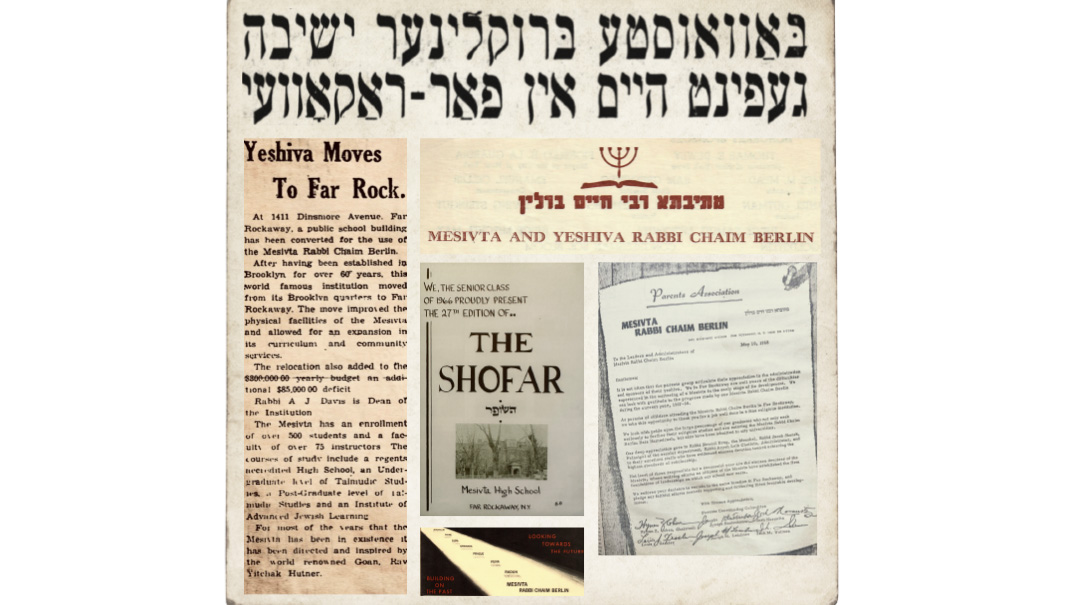Far Away in Far Rockaway
| September 26, 2023Mesivta Rav Chaim Berlin was founded in the early ’30s by the rising star in the yeshivah world, Rav Yitzchok Hutner

Chaim Berlin's short sojourn to Far Rockaway paved the way for the birth of Yeshiva Shor Yoshuv, which continues to thrive more than a half-century after its founding
Title: Far Away in Far Rockaway
Location: Far Rockaway, NY
Document: Collage
Time: 1965
The letters and numbers “P.S. 39” and “1893” are still carved into the bricks and plaster of the old building on Dinsmore Avenue. However, under the old, half-faded letters and numbers, today hangs a new, white sign with bold black lettering — “Mesivta Rabbeinu Chaim Berlin.” The old, outdated building that was abandoned by New York City is today Mesivta Rabbeinu Chaim Berlin. The crown institution of once-Jewish Brownsville was only too happy to embrace and elevate this building, in keeping with an explanation of the pasuk, “He raises the needy from the dust.”
Mesivta Rav Chaim Berlin was founded in the early ’30s by the rising star in the yeshivah world, Rav Yitzchok Hutner of Warsaw and Slabodka, as an addition to Yeshivas Chaim Berlin of Prospect Place in Brownsville, which had been founded in 1899. The changing demographics of Brownsville created a crisis for its Jewish community. Against that backdrop, the old public school building in Far Rockaway was a gift from Heaven.
Both Yeshivas Chaim Berlin and Mesivta Chaim Berlin were forced to leave Brownsville. The boarded-up shell of the yeshivah building on Prospect Place reminds every passerby of the glorious past of the old Brownsville and of the Mesivta building on Stone and Pitkin. The old Municipal Bank has also been demolished to make place for the new residents of Brownsville. The yeshivah found a home on Winthrop Street in the East Flatbush neighborhood of Brooklyn, where it recently built another building. However, the Mesivta chose to go to Far Rockaway until their newly planned home on Kings Highway would be built.
—Nison Gordon, Der Tog Morgen Zhurnal, December 9, 1965
Oops! We could not locate your form.






